Decorative plaster finishes are nothing new; they’ve been used decoratively since the Roman Empire, and far more recently were hallmarks of design trends in the 30s, 70s and 90s. But while its origins lie in Italy, plaster’s most recent renaissance, sparked at the start of the 2010s, is largely thanks to Belgian designers like Axel Vervoordt and Vincent Van Duysen. Set to stick around for a while yet (Architectural Digest said the trend boasts some “serious staying power”), plaster-coated walls are loved for their ability to add warmth and texture to any room. But what’s the key to getting it right?
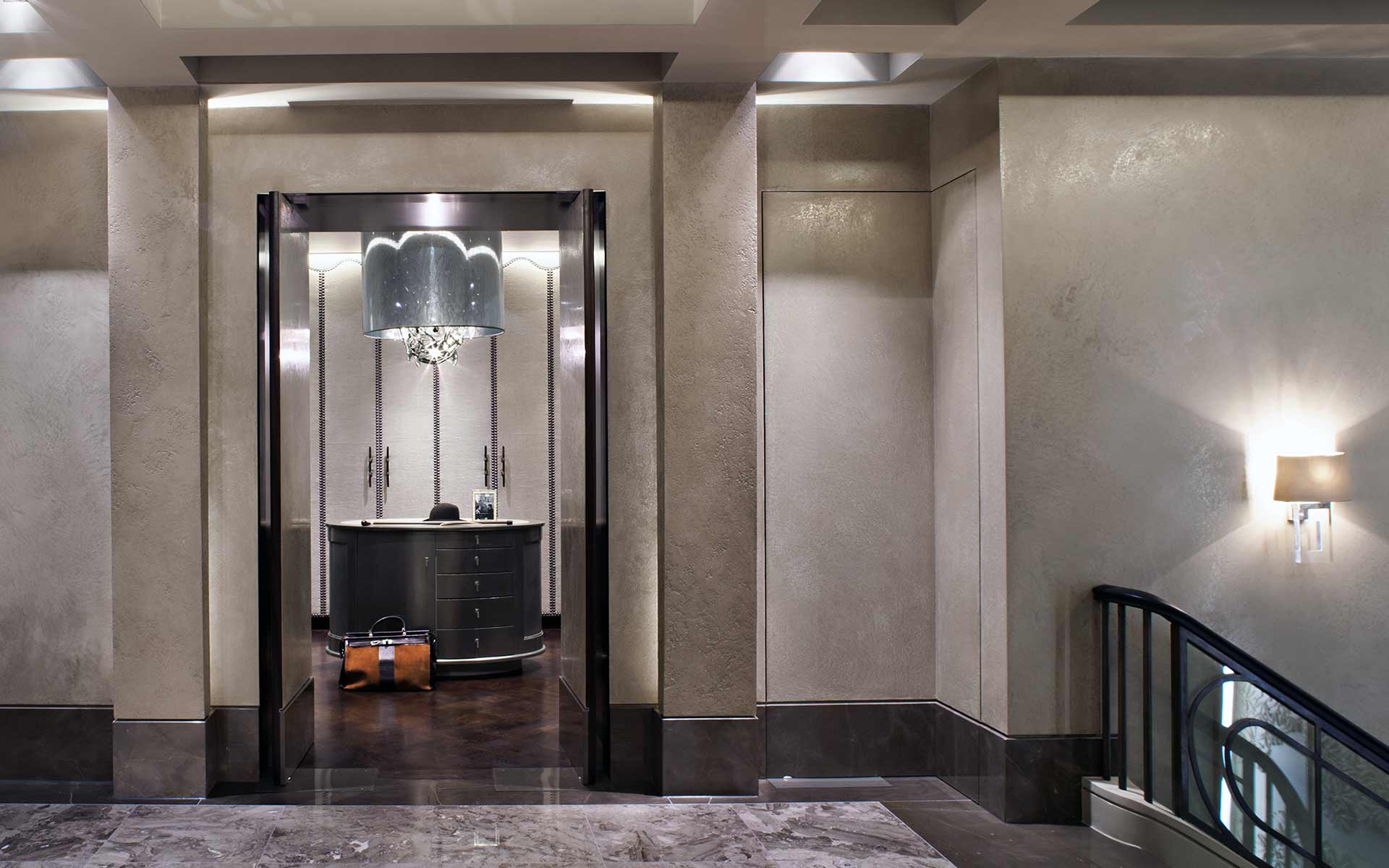
Exploring Decorative Plaster Finishes
Amy Morgenstern, co-founder of LA-based Kamp Studios, says that a simple coating of plaster can instantly transform any space from “ordinary to extraordinary”. How? With its uncanny ability to add texture, depth and character. But it’s not as easy as throwing any old thing onto your walls. There’s an array of plaster finishes to choose from, each one bringing something different to your space, from the light-reflecting finish of Venetian plaster to marble-like scagliola, ornate pargetting and even bas-relief. So, which one is right for you?
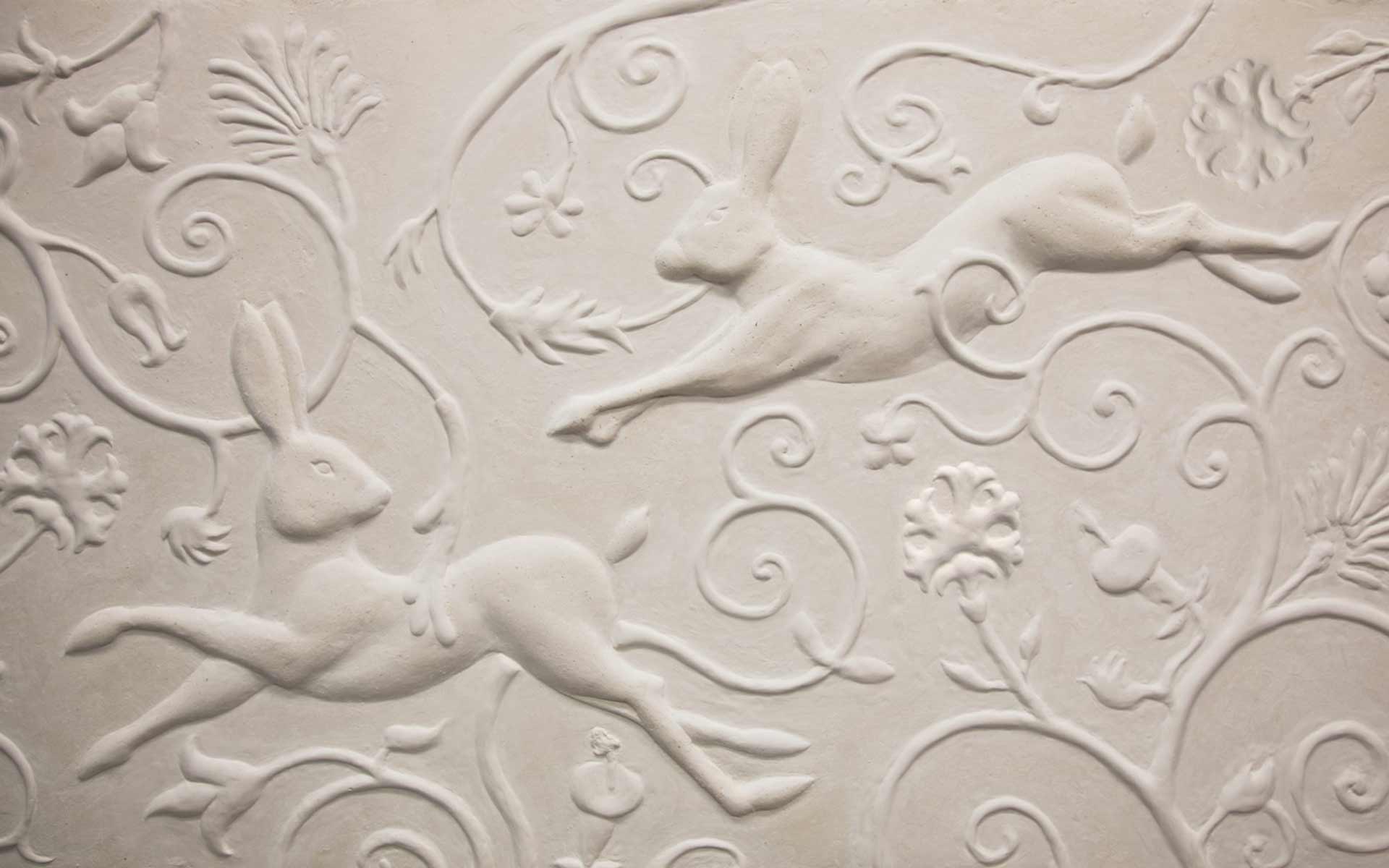
Choosing the Right Plaster Finish for Your Project
When it comes to choosing a plaster finish, it’s important to begin with thinking of the room itself. What is it used for? If it’s a pool area or wet room, for example, a water-resistant plaster won’t necessarily work: no matter how well it’s applied, moisture can eventually work its way through to the underlying surface, hence if it’s not the right substrate, the results won’t be ideal. Preparation is all important.
Secondly, how will the room be lit? Sunlight streaming through a south-facing window looks beautiful, but it’ll highlight any flaws in the plaster, so it’s important to ensure the surface is completely level. And when it comes to lamps and other lighting, choose something to complement the plaster – like avoiding soft lighting for a highly polished plaster finish.
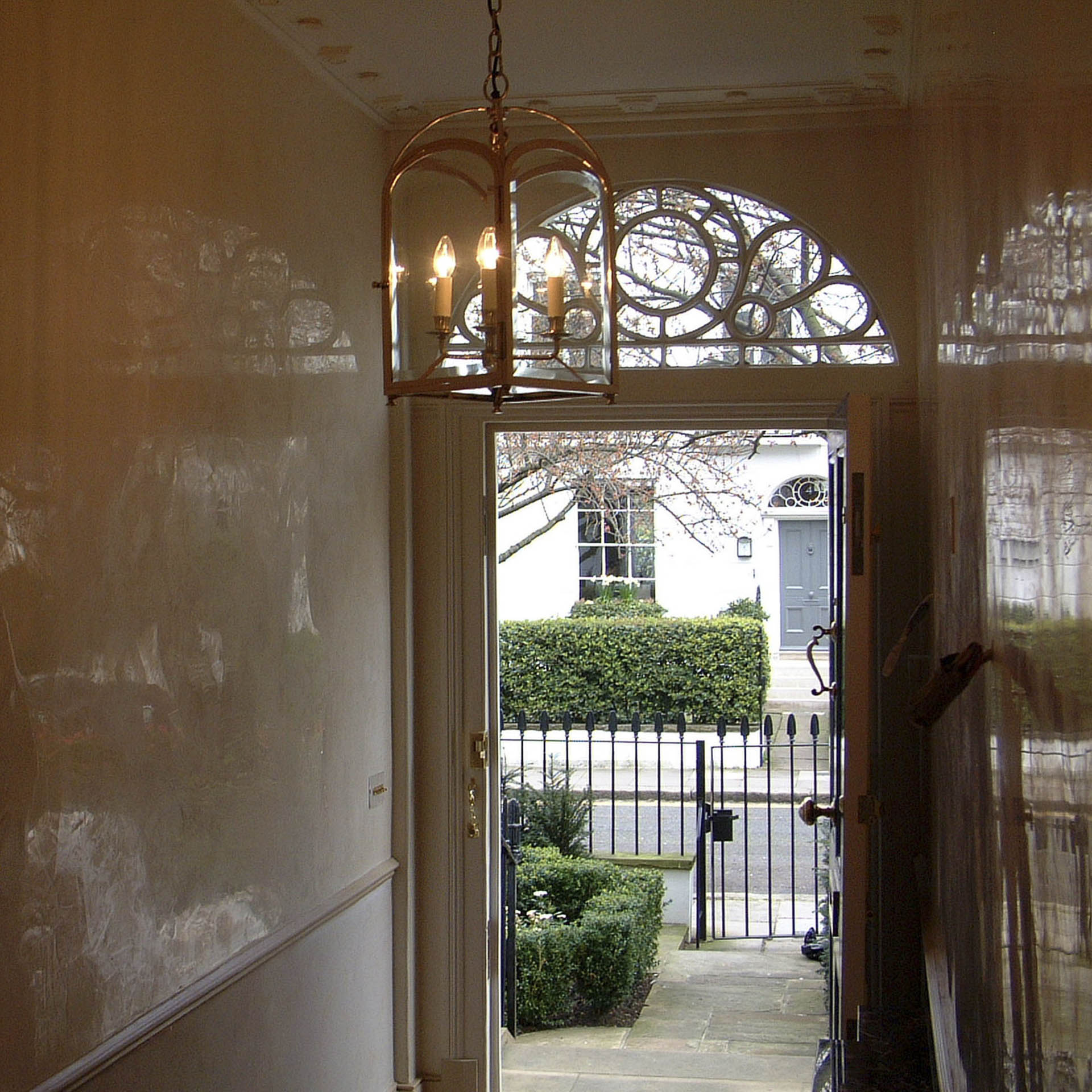
The Versatility of Venetian Plaster
Traditional methods used throughout the Roman Empire started to develop by the 15th century, and plaster masters in Italy’s Veneto region began using lime putty and crushed marble (otherwise known as Marmorino) to create a new thinner technique now named Venetian plaster. Famed for its opalescent finish and multi-tonal depth, it has seen a huge surge in popularity recently, even starting to overtake traditional wall coverings like paint – and Pinterest searches for the technique have tripled.
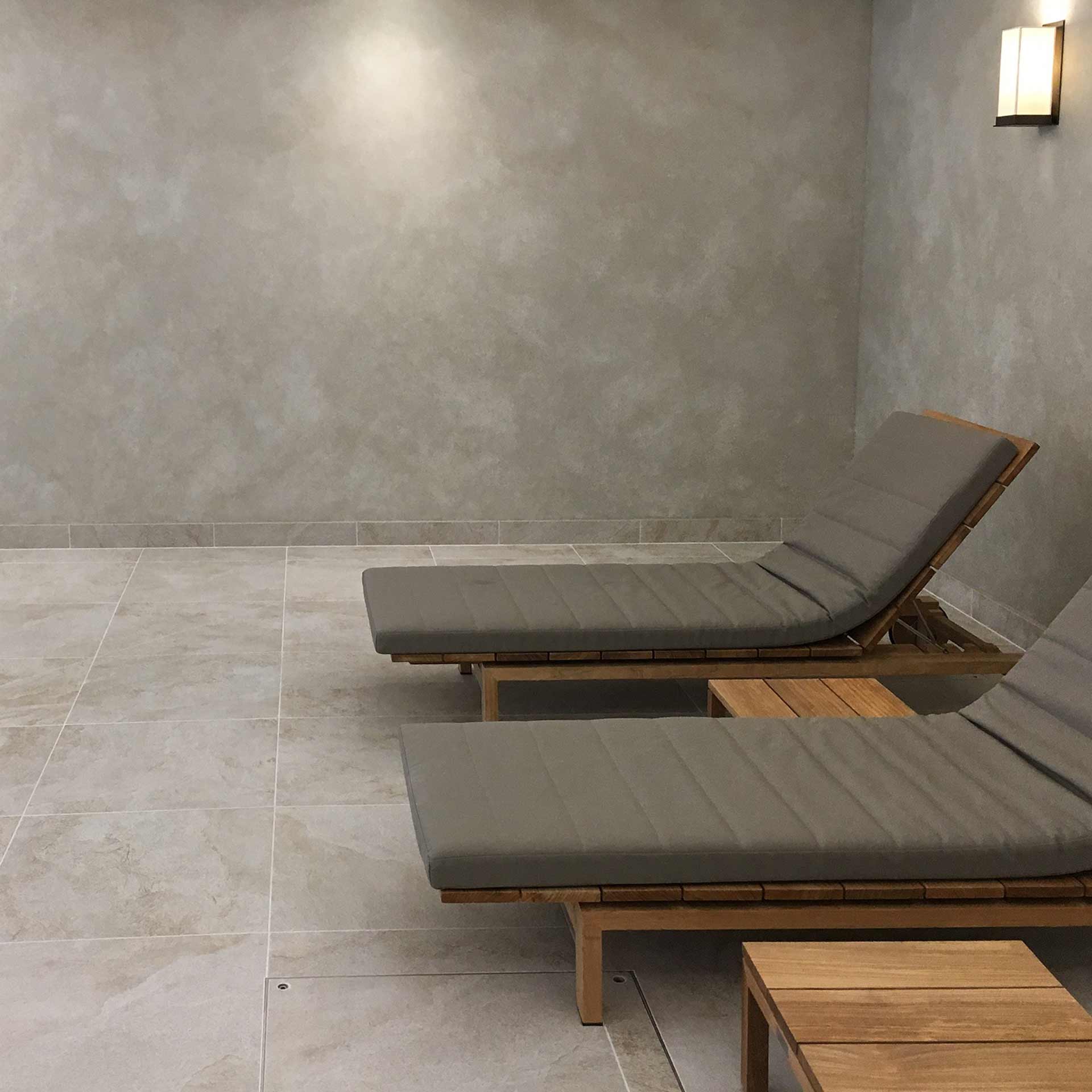
At DKT, we’ve been working with Venetian plaster since the 1980s. We’ve honed our expertise to the point of being able to offer an extensive range of colours – and can even incorporate a translucent pearl glaze if it works for the space. We’ve applied it as a backdrop to glass-panelled staircases on private yachts, to walls in restaurants like The Randolph Hotel and The Square restaurant, and in welcome halls in luxury homes.
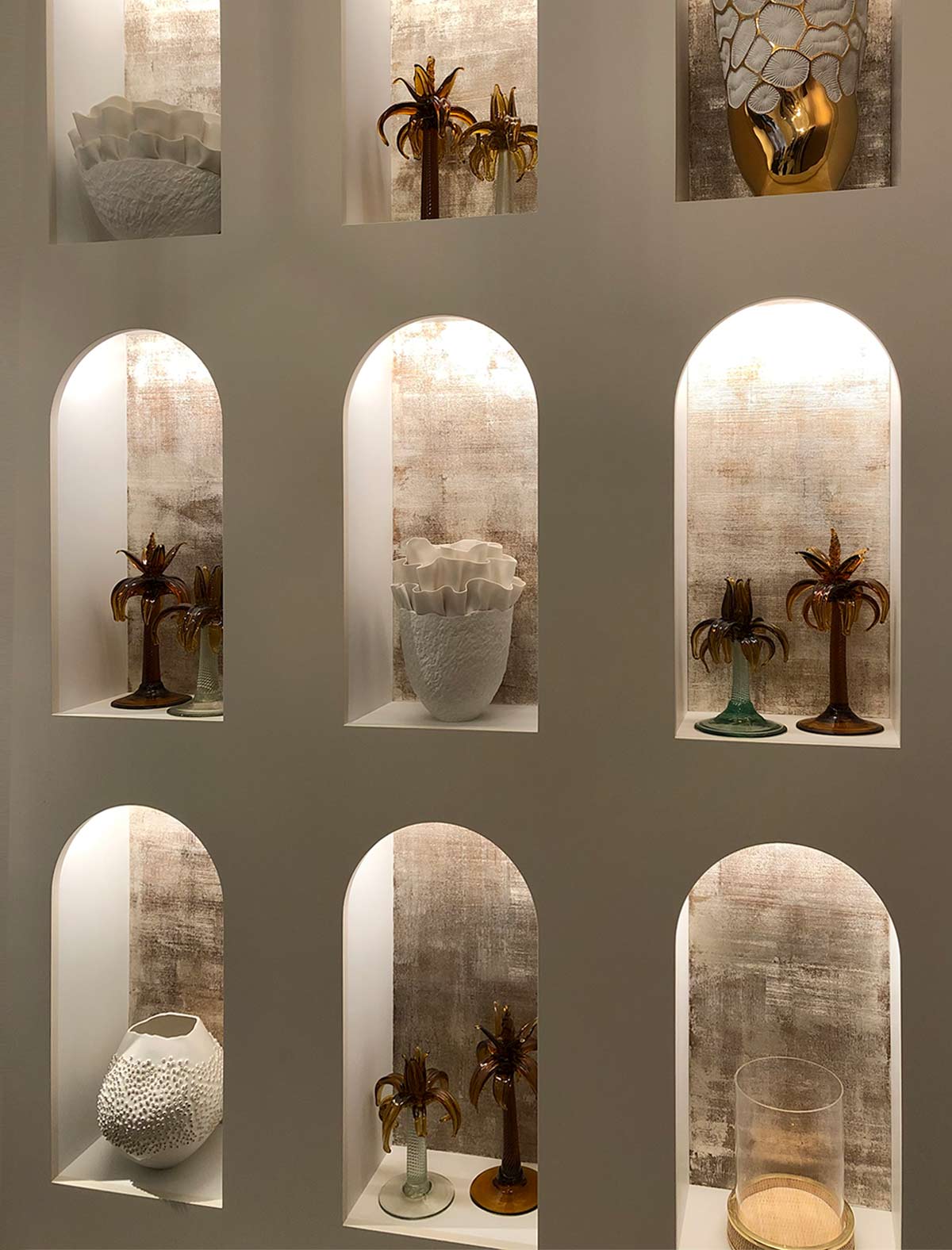
The Artistry of Textured Plaster Finishes
Plaster is, of course, inherently textural, but there are specialist, exaggerated finishes that up the ante. Not technically a plaster, gesso is a mixture of rabbit skin glue binder, pigment and chalk. When it dries, it forms a thin but rigid surface that, when applied to a flexible material like canvas, can be bent to crack the gesso and form intricate patterns. It’s a painstaking process, but gives a tactile finish that’s completely unique. You’ll see an example of our own gesso work forming the backdrop for crockery, glasses and other homeware in Bonadea, a luxury store nestled in a quiet street near London’s covetable Sloane Square.
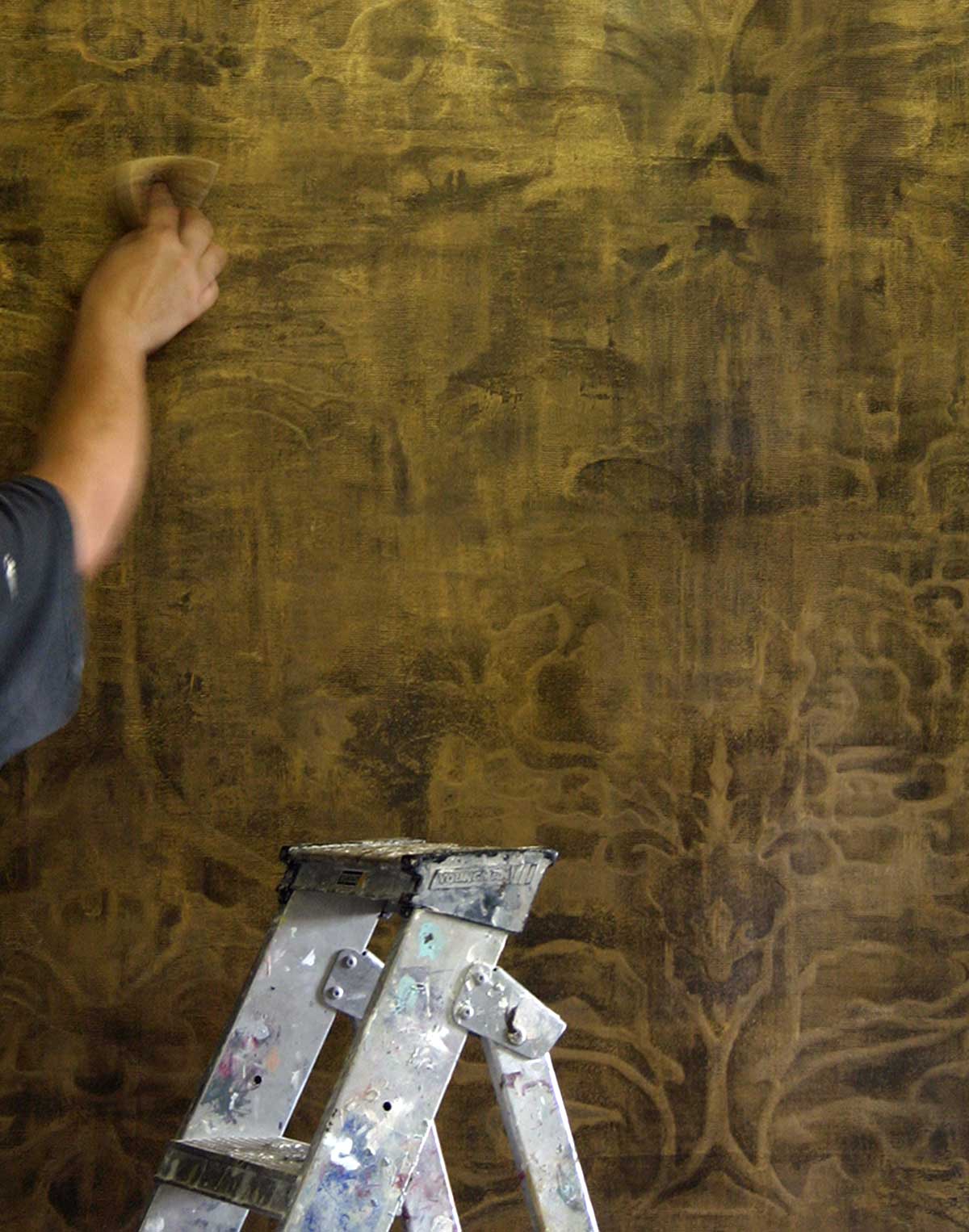
Similarly, tadelakt (otherwise known as Moroccan plaster) is a lime-plaster technique that dates back to 11th-century Marrakech. Famed for its use throughout North African riads, it has a smooth, natural finish that boasts a subtle sheen, achieved by applying an olive oil soap to the surface before polishing it with a stone. Not only is tadelakt highly tactile, it’s waterproof, too – making it a great option for wet rooms, bathrooms and pools.
The Elegance of Metallic Plaster Finishes
Although plaster is often used for its natural, earthy finish, we offer modern versions at DKT that will sheath your walls in shimmering metallics, created using natural mica or other reflective pigments like bronze or aluminium.
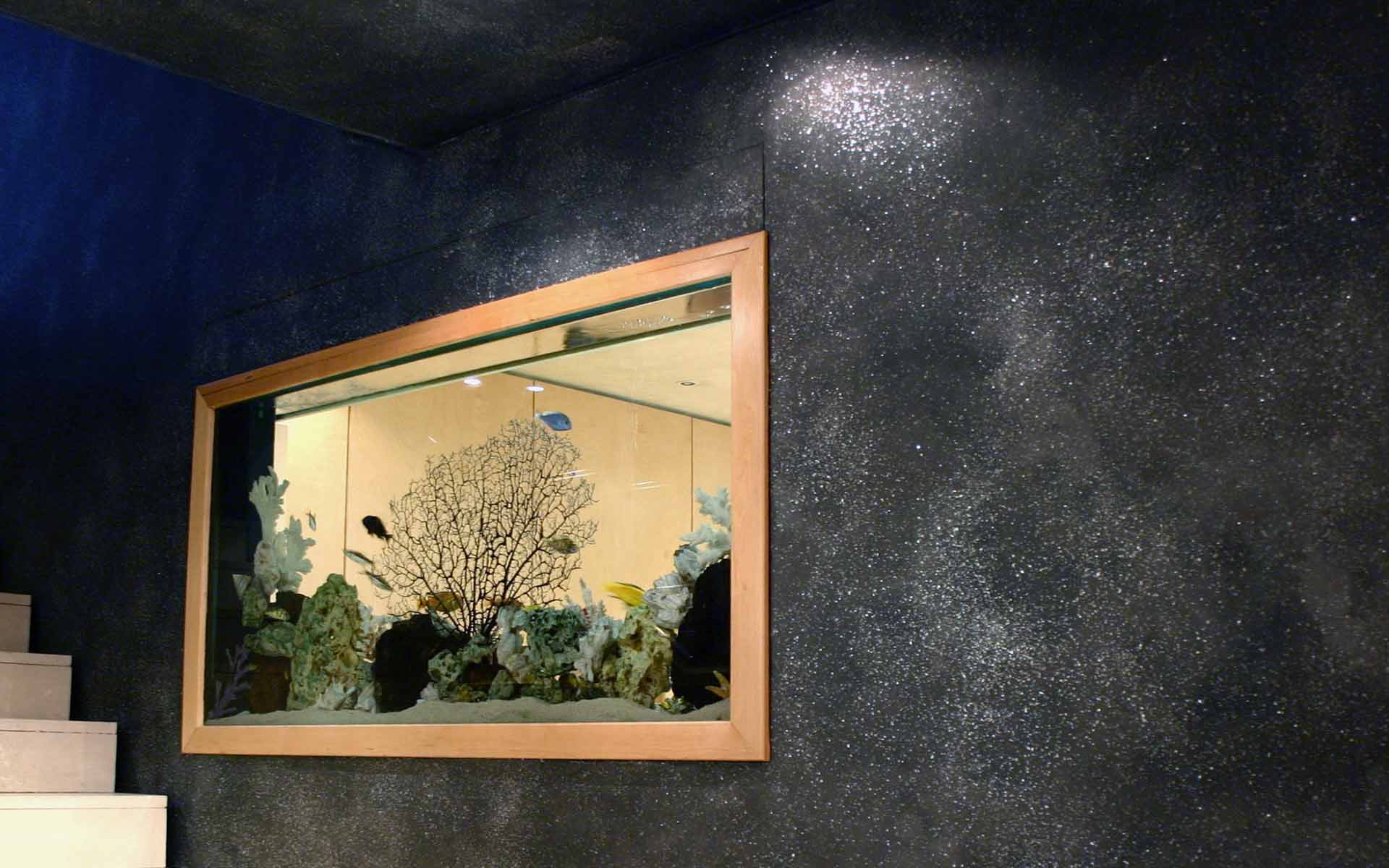
An easy way to add a touch of opulence to your space, metallic finishes work best on larger walls that can be viewed from different angles; that means the light is reflected differently depending on where you’re standing, creating an ever-changing finish that adapts as you move around the room.
Creative Customization and Bespoke Finishes
At DKT, we’ve worked with stucco techniques and materials like Marmorino and Venetian plaster for decades, creating our own variations and distinctive styles along the way. Head into Oxford’s The Randolph Hotel for a drink, and you’ll see an imposing example of our stucco work in the form of a purposefully distressed plaster coating the wall behind its marble-topped bar.
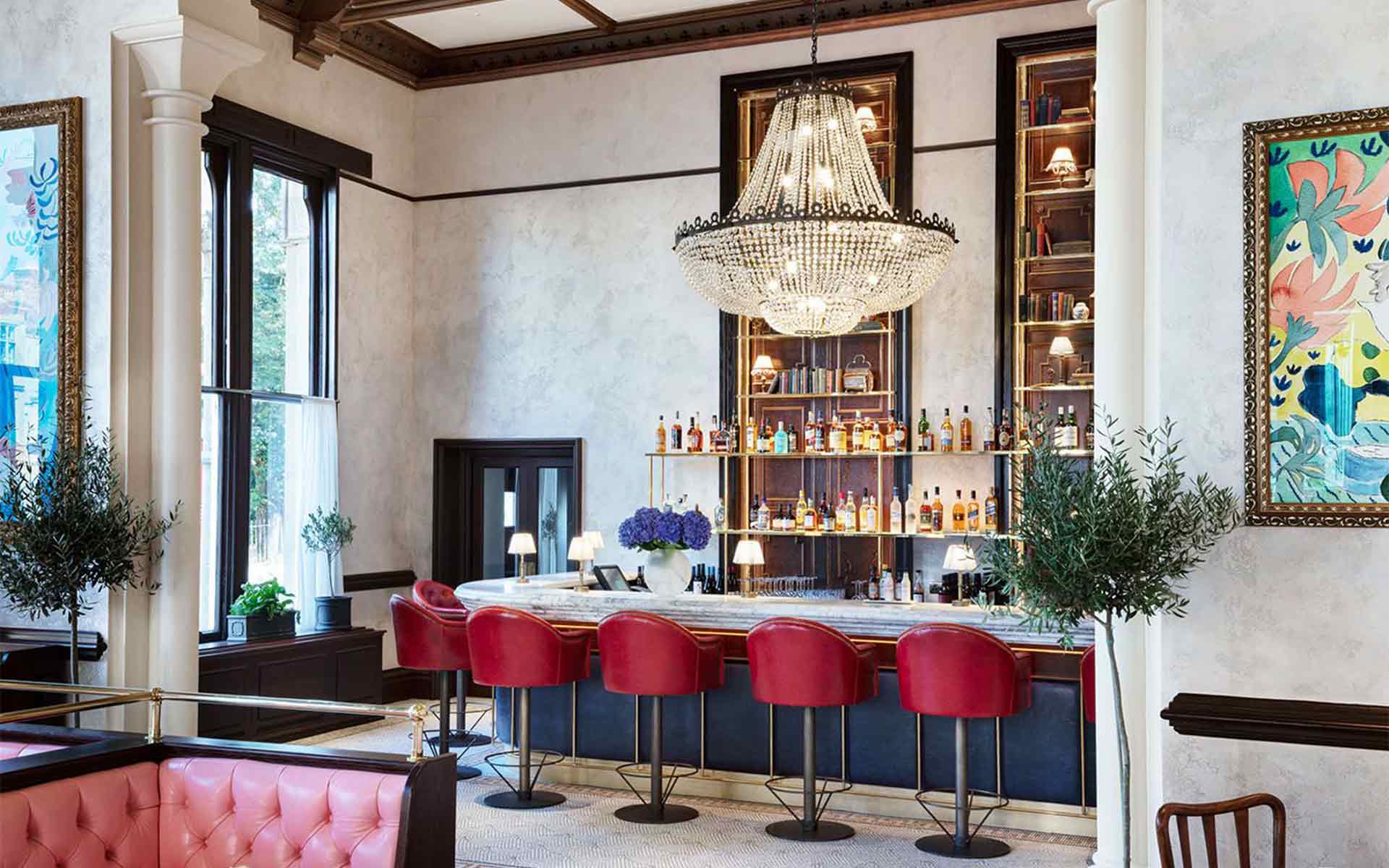
But it’s not just five-star hotels that hold our work; we’ve plastered spaces throughout the hospitality sector, in private homes and even on superyachts. No matter your space, we offer a completely bespoke service that’s tailored to your needs. Read more about our stucco and Venetian plaster services and discover how these finishes can elevate luxury homes.
Maintenance and Longevity of Plaster Finishes
Although it’s sometimes less than a couple of millimetres thick, plaster often has an integrity that other finishes lack. But of course, life happens; like wallpaper and paint, plaster finishes are susceptible to marks and scuffs over time. But when they’re treated well, they can last for years; in fact, they’re often referred to as ‘lifetime finishes’.
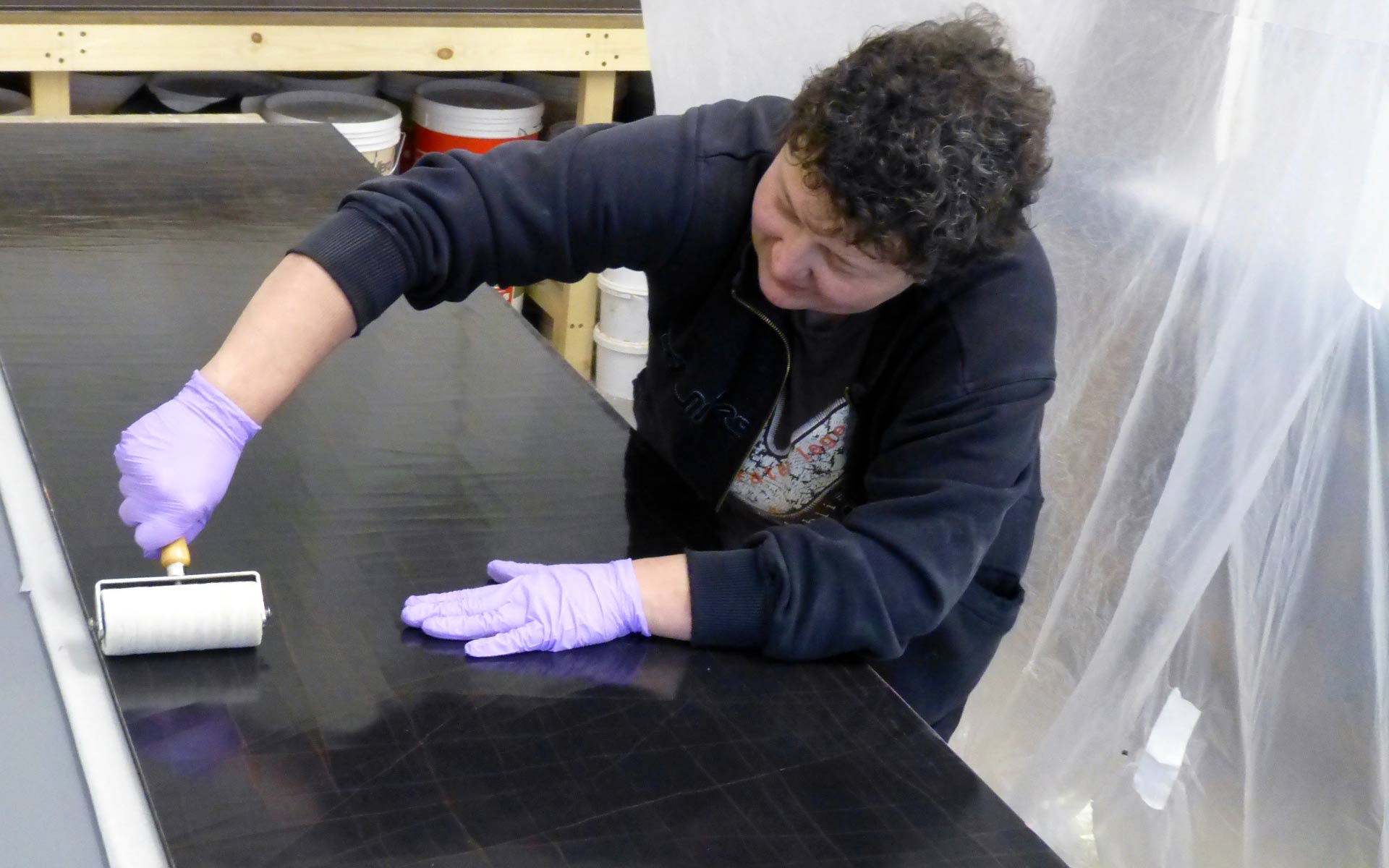
Modern advancements in plaster have made the material easier to repair, as sometimes it may be possible to patch up blemishes rather than having to painstakingly replaster an entire wall. To help take care of your plaster, we supply you with maintenance guidelines after applying your surface, helping to take the fear out of cleaning your walls – and to avoid using unsuitable solvents.
Enhance Interior Spaces with Decorative Plaster
Ready to explore the world of decorative plaster in your own project? From subtly luxurious textured gesso to all-out opulent metallics, our range of plaster finishes means we can find the perfect fit for any room, indoors or out. Get in touch with us and we’ll guide you on getting the right plaster finish for your project.